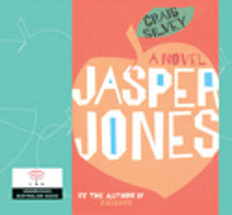Jasper Jones by Craig Silvey

Allen and Unwin, 2009. ISBN 978 1 74212 370 7
Louis Braille Audio, 2010. 11 CDs, 13 hours. Read by Humphrey Bower
Highly recommended. Hearing someone calling him through his louvred
bedroom window, Charlie climbs out and discovers the boy that parents
warn against, a boy who roams the streets, with an alcoholic father and
Aboriginal mother, an outcast in this small community, except for when
he plays football. But Charlie does follow him and is taken to the most
appalling sight he has ever seen, a dead girl hanging from a tree in a
spot everyone knows is Jasper's private place.
Together the boys work out some sort of plan, hoping to uncover the
killer before the police come for Jasper, knowing full well that if
this happens, Jasper will end his days in jail.
Isolated Charlie faithfully records the hypocrisies of life in mid
twentieth century Australia, but does not intervene when Vietnamese
Jeffery, his best friend, is taunted and abused, or Jasper is beaten
up, or Eliza is vilified by the ogling boys in the cricket team.
Examples of killers abound as Charlie reads of the trials of Eric Cooke
with the hair lip killing women in Perth in the 1960's or the horrific
murder of Sylvia Likens in the USA in 1965, and later the disappearance
of the Beaumont children in South Australia in the 1960's. These
form a disturbing backdrop the story of the death of Laura Wishart that
is gripping and intriguing, leading us on until we know the whole
shocking truth of this small country town.
The reading by Humphrey Bower is intoxicating. His voice takes on the
innocence and fear of a young boy caught up in an incident beyond his
experience and years. The two boys are contrasted extremely well,
Bower's voice having a degree of unsettledness which denotes Charlie's
shock at what is happening around him. Bower is able to easily identify
for us the different characters, and the modulation and intensity of
his voice grabs the readers' attention as the story progresses. The
deliberate pace underlines the laconic nature of the Australian
character and the range of characters is delineated by a change of tone
rather than the use of stereotypical accents.
This is a disturbing story that resonates with moral questions,
ambiguity and the notion of right and wrong. There is no black or white
answer, but the subtlety of the story and its consequences will
intrigue and provoke discussion.
Fran Knight